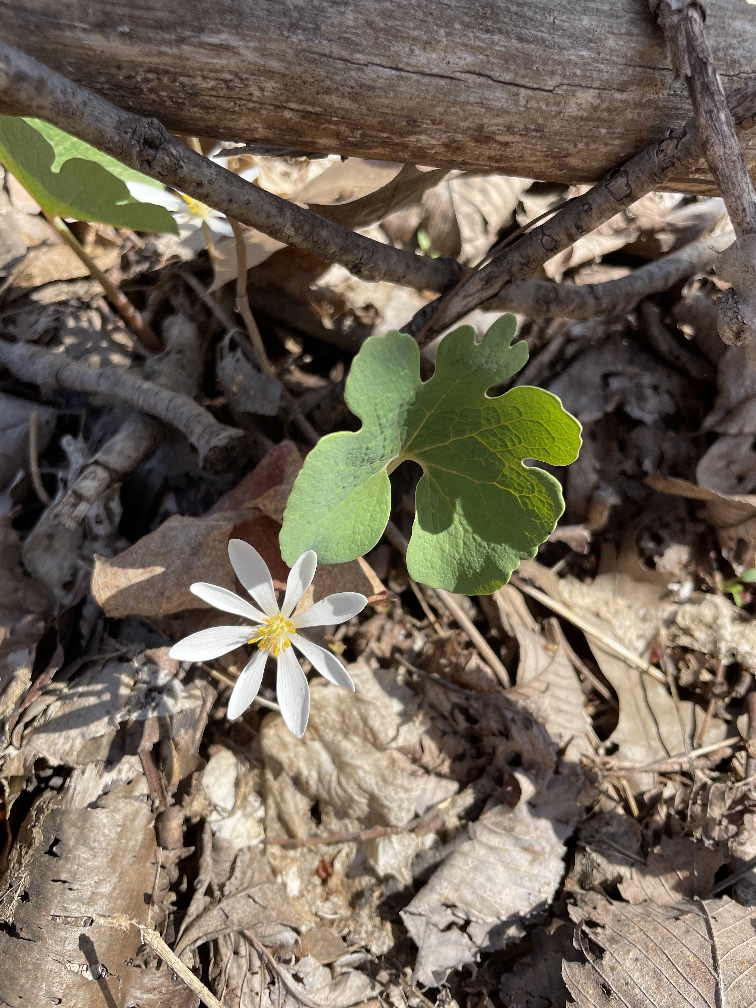Kathleen Garrett
April 20, 2024
Like other woodland spring ephemerals, Bloodroot appears in the woods in early spring, before
the trees leaf out, and lasts only a couple of weeks, and sometimes less.
At Eliza Howell Park, there is a group of Bloodroot in the woods just off the side of the road loop, but there may be more in other locations in the woods. They seem to prefer a hillside.
In spring, usually April, a single, rolled leaf emerges from leaf litter, holding a single flower bud.

As the temperature warms, the leaf unfurls and an eight petaled, white flower with a yellow center, about 2 inches across, blossoms. These flowers close at night and/or in the shade, and open again with warmth. The flower will die in about two weeks, but the puzzle-piece shaped leaf will continue to grow, (up to 9 inches across).

Bloodroot is named after the red or orange juice that oozes out when its stem or root is broken. Several sources list a number of historical and/or Native American uses for this juice, among them dye, insect repellent, and as a treatment for inflammation, infections, and cough.

Bloodroot is native to Eastern North America and spreads via rhizomes or small bulbs below ground.

Bloodroot is a “generalist,” meaning that it can also be pollinated by many kinds of insects. This increases the chances of survival and propagation. If pollinated, seed pods appear after the flowering is over. These seed pods hold about 30 seeds. Each seed has an organ,
called an elaiosome, that is attractive to ants. Ants carry these treats back to their nests. After
they eat the elaiosome, but not the seed, the ants carry the not so delicious seeds to their trash
dump, and so the seeds are planted among the debris. It’s a clever, if not
glamorous, beginning to a beautiful, brief flower.

The season for Bloodroot is brief, so don’t put off going to the woods. Bloodroot is just one of the several spring ephemerals at Eliza Howell Park. If you miss them, you may never know they were there. They emerge, bloom, and die back quickly, disappearing into the forest floor until next spring.
Leave a comment